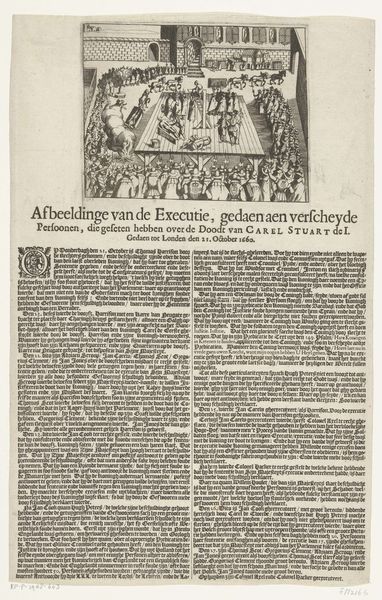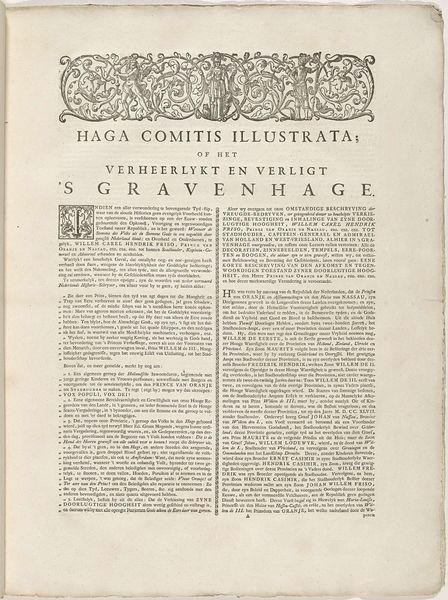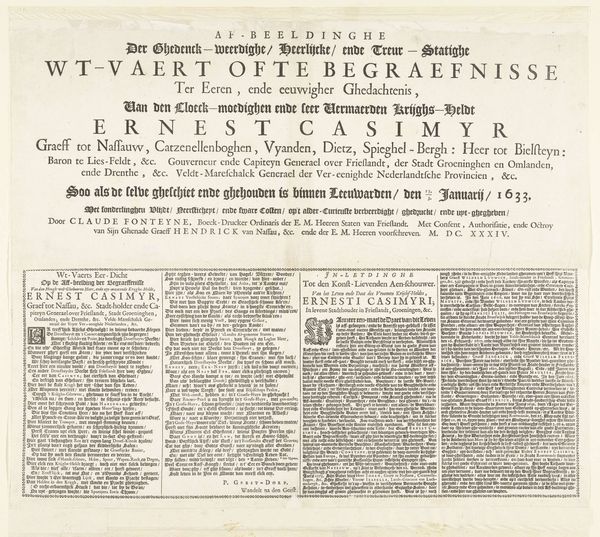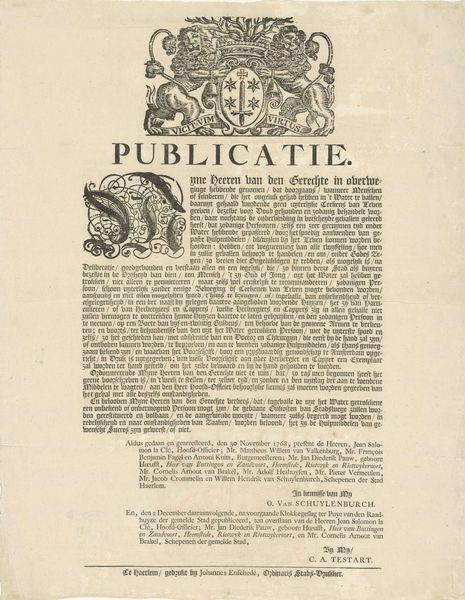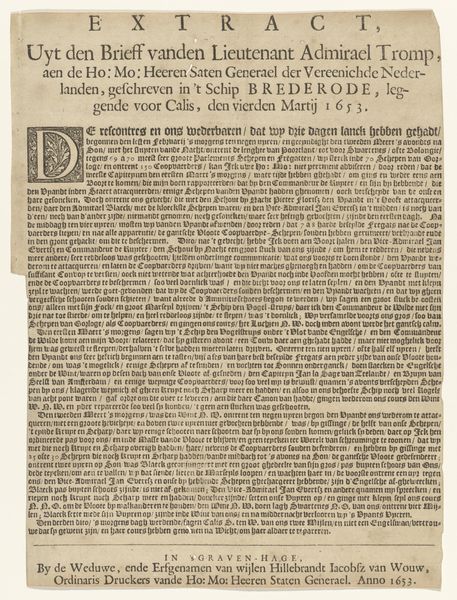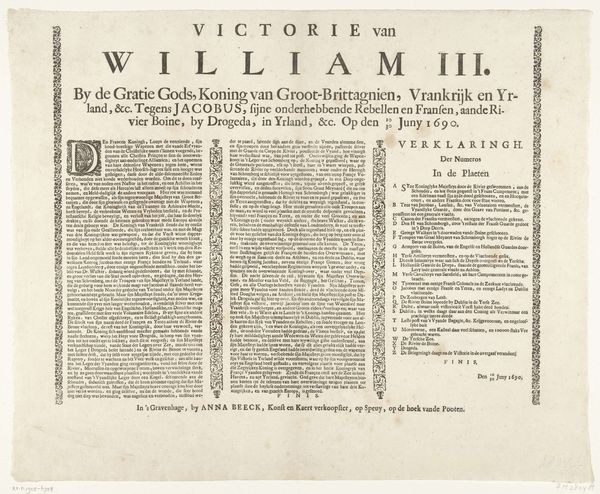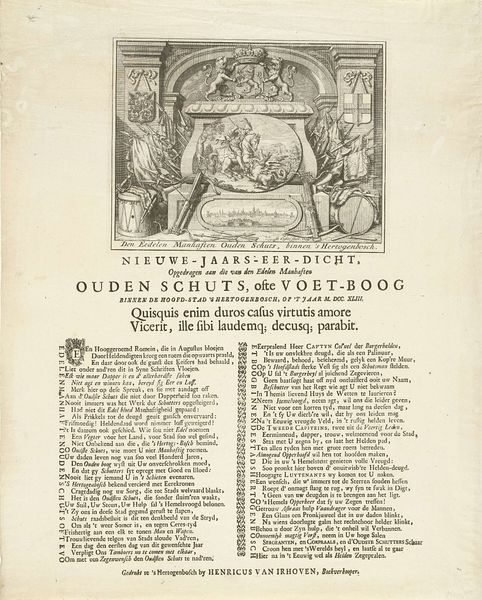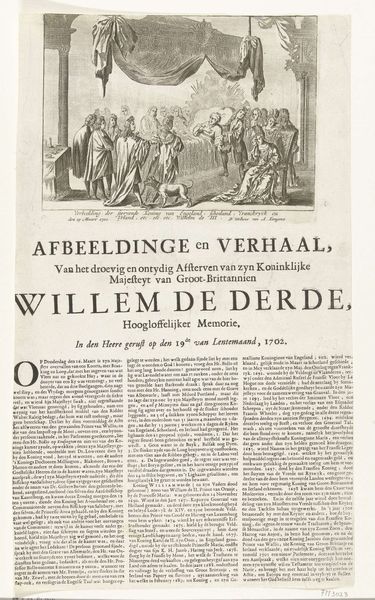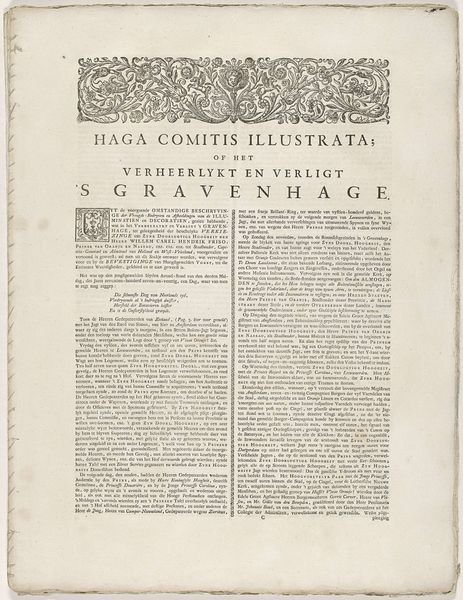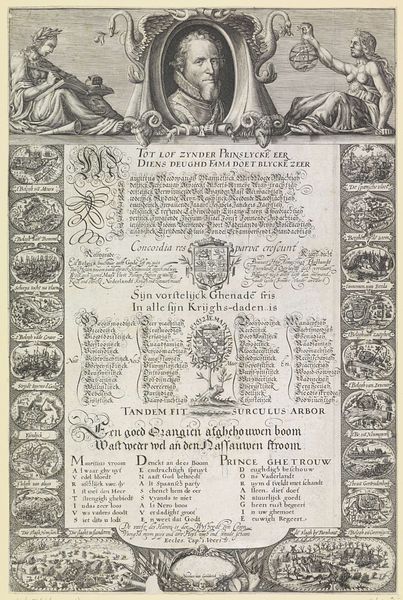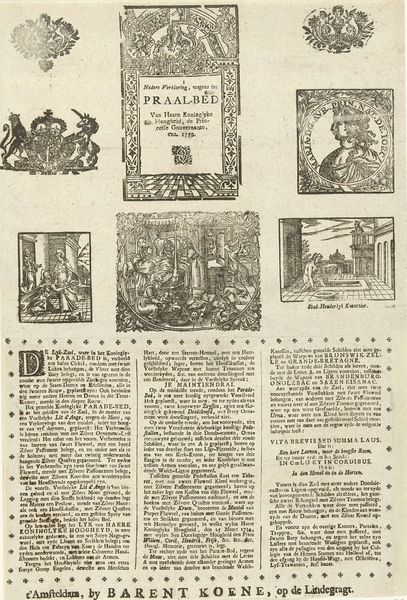
print, engraving
#
portrait
#
baroque
# print
#
old engraving style
#
hand drawn type
#
personal sketchbook
#
sketchwork
#
hand-drawn typeface
#
pen-ink sketch
#
pen work
#
sketchbook drawing
#
history-painting
#
storyboard and sketchbook work
#
sketchbook art
#
engraving
Dimensions: height 394 mm, width 288 mm
Copyright: Rijks Museum: Open Domain
This broadside, created in 1672 by an anonymous artist, depicts the gruesome murder of the De Witt brothers. The portraits flank the central image: their naked bodies hung upside down from a scaffold, evoking the ancient motif of the "hanged man," a symbol laden with meanings of sacrifice, betrayal, and inversion. The inverted body is a potent symbol with roots stretching back to antiquity. We see echoes of it in Tarot's "The Hanged Man," a card signifying suspension and introspection. It evokes a primal fear of being upended, helpless, and exposed. This posture strips the De Witts of their power and dignity, turning them into objects of public desecration. Consider the ritualistic nature of this display. The act of hanging the bodies upside down isn’t merely about death; it’s a symbolic act of dominance and degradation, speaking to a deeper, subconscious desire to punish and humiliate. It’s a dark mirror reflecting the anxieties and passions of a society in turmoil, a brutal reminder of the cyclical nature of violence and retribution.
Comments
No comments
Be the first to comment and join the conversation on the ultimate creative platform.

